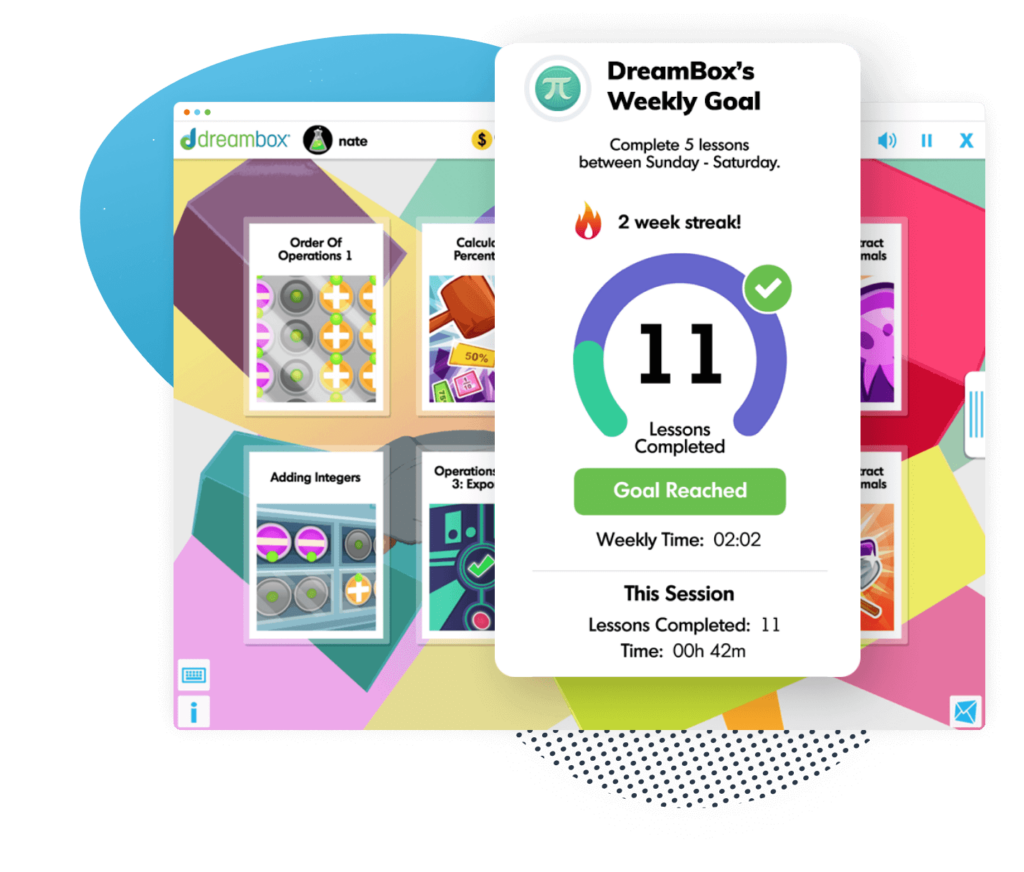5 Need-To-Know Homeschooling Tips for New Parents
Homeschooling your child might feel overwhelming at first, but these five homeschooling tips will help you establish structure and create an environment full of joy and love for learning.
Author
Corinne Weaver
Published:
March 2025
Key takeaways
- • Trust yourself and your own decisions. You know what is best for your family.
- • Structure helps, but so does fun.
- • It’s important to find community and support while you are homeschooling.
Homeschooling to a former homeschooled student seemed like a no-brainer. I knew the routines, homeschooling tips, and pitfalls–or so I thought. However, once I started homeschooling my children, brand new challenges arose to haunt me and teach me a much-needed lesson: Everyone’s educational journey is different.
I thought I could juggle it all—starting a business while homeschooling my kids. But life threw me a curveball when my first child was diagnosed with dyslexia. It became so easy to lose myself in books and manuals to find tips for homeschooling a child with a learning disability, religiously follow any homeschool tips and tricks, or even become trapped in routines and schedules that felt too rigorous.
Homeschooling could provide my children with a balanced and nurturing environment, but it could also interfere with my other plans. Sometimes, it felt like I lived in two different worlds. My days abruptly shifted between video calls with clients and wiping paint off the walls after an “abstract art” session. The fast-paced business world did not meld well with messy art projects, science experiments, and learning the difference between “big B, little b” and “big D, little d.”
I often questioned my sanity, but eventually, after a few weeks, the routines began to take root. Mornings transformed from chores full of whining and worry to energetic and productive moments for my child. Meanwhile, in the afternoons, I would work and find new clients while my child “did her work” alongside me. Conquering trials together allowed me to bond with my baby bird. Together, we learned that mistakes don’t stop us–they help us learn how to fly.
If you’re in the same boat as I was, you’re not alone. Here are some homeschool tips that helped me survive those first few months.
Tip #1: Do Your Research + Trust Your Decisions
For first-timers, self-doubt can creep in on the very first day. But as long as you’ve done your research, you should trust your ability to make the right decision for you and your family. Ensure you have a plan, curriculum, and goals you and your little students can achieve within a year.
You know your family best, better than any school or program. Spend some time watching your children and how they learn, what stresses them out, and what captivates them. While it’s okay to listen to other people’s tips for homeschooling, you are the teacher and the parent. You have your child’s best interests at heart.
Others–including questioning family members, friends, and next-door neighbors–might contribute to your insecurity, but don’t let them. Public education and private schooling did not fit your child’s needs at this time, and it’s important to vocalize this fact as often as you can. Everyone will have plenty of homeschooling tips for beginners, but it’s ok if some of them do not work for you.
Table of contents
Get help with homeschool math with DreamBox!
Tip #2: Create A Dedicated Homeschooling Space
We have bedrooms to sleep in and kitchens to cook in, so it only makes sense that we have rooms designed for work and study. When my child and I began homeschooling, we had to share space. But I put my work desk next to my child’s school desk. Colored pictures and workbook exercises that she excelled in covered the walls, making it an engaging environment. Crayons and pencils lined our workspaces, and school books sat on a shelf I found at a thrift store. These elements helped us set the tone for learning, motivated us to learn, and helped us relax when the day was done.
Making sure your children have a space to learn at home will also help them properly structure their day and become independent learners. My heart filled with pride when my child went to her workspace to do her homework by herself when I came down with the flu and couldn’t supervise.
Tip #3: Allow Everyone To Participate In Learning
It does take a village to raise a child. Grandparents, older siblings, partners, and other homeschooling parents can help keep your child’s education diverse. But even more so, it can give you a few hours off. We all know parenting is a 24-hour job, but our sanity demands we find some time for ourselves. If your mother wants to spend quality time with the grandkids or you have a homeschool community that organizes co-op classes, sign your students up!
Part of the benefits of homeschooling include the ability to bond more with family members. Spending time with siblings, cousins, or friends can teach cooperation, sharing, and problem-solving. Your spouse might be able to help with homework–those pesky math problems stump even the best of us at times. You might also find some much needed support or homeschooling tips for parents that will help your specific situation.
Tip #4: Establish Rules and a Schedule
Growing up, mornings were for homeschool math lessons, reading out loud, and science experiments. We spent afternoons doing homework or sports. While I changed the pattern to suit my child’s needs, the structure remained the same. Every child flourishes with consistency.
Start small: When are you able to begin the school day? When do you want your children to do their homework and worksheets? When is it time for lunch? Write it down and stick to it–but don’t worry if the day goes off-script. The point of this plan is to create a natural rhythm so that eventually the system runs itself.
Rules are just as important as schedules. They help set boundaries and expectations, which can reduce frustration for both you and your child. Keep them simple and age-appropriate. For younger kids, a rule might be, “Clean up your learning space before lunch.” For older kids, it could be, “Finish your assignments before screen time.”

The math program that drives results
Get started today!
DreamBox adapts to your child’s level and learning needs, ensuring they are appropriately challenged and get confidence-building wins.
Tip #5: Remember to Have Fun While You’re Homeschooling
Plans, homework, classes, soccer practice, or science projects can overwhelm a busy parent. It’s important to take a breath, tell a joke, and focus on bonding and connecting with your children. Kids will learn more and remember more if they associate learning with fun memories and activities. Take a page from teachers who specialize in learning disabilities. ADHD homeschooling tips often recommend pairing physical education (gym) with some more tedious studies (memorization). Even if your child does not have ADHD, they might benefit from this approach.
You can gamify learning to some degree, especially when it comes to homeschool math practice or reading, but you can also take advantage of gorgeous outdoor weather to teach the lifecycle of a frog, or the many stages of a butterfly. Museums can offer hands-on history and science lessons. Perhaps your local community theater has a Shakespeare play or a classical symphony orchestra night. Homeschooling is a marathon, and you’re trying to foster life-long learning. Make sure your kids learn to laugh along the way.
FAQs about the Homeschooling
Children thrive on consistency and routine when it comes to studies. However, it’s important to remember that homeschooling can often be more efficient than a public school and can streamline homework, lessons, and activities in a way that large classes simply cannot. There is no right answer to this question, but rather it will depend on your state laws, your child’s strengths and weaknesses, and the standards set by the grade level.
Homeschooling is at its most successful when it matches the child’s style of learning, level of interest, and the parent’s teaching approach. There is no one-size-fits-all method of homeschooling that works for everyone.
For many parents, the hardest part of homeschooling could be the self-doubt, the overwhelming feeling of having taken on too much, or the adjustment to the new routine or schedule. However, the best way to overcome these issues is by finding community (homeschooling co-ops or local groups), flexibility, and keeping your approach simple and strategic. Everything else has a way of falling into place.
- Do Your Research + Trust Your Decisions
- Create A Dedicated Homeschooling Space
- Allow Everyone To Participate In Learning
- Establish Rules and a Schedule
- Remember to Have Fun While You’re Homeschooling
Take at home math practice to the next level
Empowering parents and educators to make math practice more impactful. Plus, your kids will love it.


